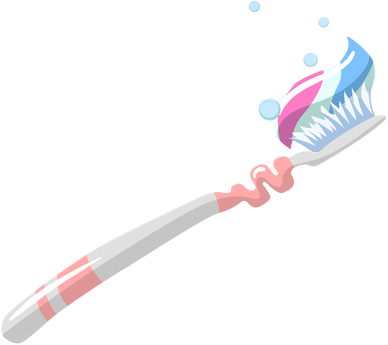 Bloomsburg, Danville, and Lewisburg, PA
Bloomsburg, Danville, and Lewisburg, PA
A root canal is a dental procedure that seeks to save a tooth that is decayed past the point that a cavity can be corrected by a simple filling. During a root canal, a patient is anesthetized to eliminate discomfort. Once the anesthetic has taken effect, either a dentist or a specialist called an endodontist uses a miniature drill to make an opening into the decayed tooth. Decayed pulp and the dental nerve are then removed (which is not harmful, as adult teeth do not need either), and the dentist will use another tool to dig a channel in the now-hollowed tooth. The “canal” is then rinsed and disinfected and filled with an antimicrobial, rubber-like substance known as gutta-percha. The initial drilled hole is then filled, and the entire tooth is covered by a temporary crown. This allows the patient to eat and speak as usual (once the anesthetic wears off), before a follow-up visit in which a permanent crown – one fashioned to mimic the size, shape, and appearance of the original tooth – is installed.
Root canals have an undeserved reputation as being the very epitome of a painful, unpleasant experience. This is untrue, as the root canal itself usually only takes an hour, and the patient is anesthetized; it is no more unpleasant than any other dental work, and any aches afterward are not severe and fade quickly. But one thing that cannot be denied about root canals is that they are among the more expensive dental procedures, often costing upwards of $2,000 dollars per tooth. Insurance will cover some (but rarely all) of this cost.
The price includes the crown, and since it is part of what is known as a major restorative procedure, it is also (partially) paid for by insurance. However, there are other occasions in which crowns are recommended, such as when they are placed to strengthen damaged or worn teeth or to mask severe discoloration. Insurance covers very little of the expense of crowns under these circumstances, and they can range between $500 to $3,000 per crown. The high price tag for both root canals and crowns might understandably lead to the question: Why these are so expensive?
Root canal surgery
While the root canal, itself, is fairly quick, it often comes with other expenses, including an examination that is over and above what happens at a routine checkup and usually includes x-rays (often to aid in the creation of the crown) and the making of molds. The latter expense is also included even when crowns are not part of root canals since an image must still be taken of the tooth to make the crown regardless of why it is being installed.
Furthermore, a root canal will always involve anesthetic, which adds to the expense. A root canal of a molar or back tooth can add to the difficulty and time of the operation, and – except in those cases where the dentist has the technology for in-office creation, akin to a 3D printer for porcelain – there is also the cost of the temporary crown. Finally, if the root canal is undertaken as a dental emergency (because the decayed tooth is so painful that the patient cannot wait, for example), other costs will be added.
Furthermore, if the dentist does not have the technology for onsite creation, there must be a return visit to install and adjust the finished crown on top of the root canal.
Materials
Not all crowns are equally expensive, and much of the expense depends on the materials used for them. Crowns are made from a wide range of substances, which vary in strength, durability, visual appeal, and therefore price.
Other than temporary crowns, which are usually made of acrylic, crowns are usually made of:
Metal
Crowns made of metal are typically fabricated from gold, platinum, nickel-chromium, or cobalt-chromium alloys. These crowns usually cost the least and are generally the most durable. This is important because crowns will almost always need to be replaced at some point. The lifespan of a metal crown is around 15 years.
On the other hand, metal crowns can rarely pass as a natural tooth. For this reason, metal is most often used for crowns for molars and back teeth. Likewise, metal cannot be used for patients with metal allergies.
Porcelain
Porcelain is another common material for crowns. These will be more likely to resemble natural teeth (making them more suitable for front teeth) and almost never trigger an allergic response as metal can. However, porcelain is less durable, with only about a 5-year lifespan. They are also more expensive, both at the outset and when they must be replaced.
Porcelain fused to metal (PFM)
Porcelain fused to metal crowns consist of porcelain atop a core of metal, with allows them to combine the durability of metal and the visual appeal of porcelain. They are usually cheaper than many crowns (especially gold ones) and less expensive than all-porcelain. However, PFMs can show metal lines at the gum, which can be unsightly. They also carry all the risks of metal allergies that metal crowns do.
Zirconium Dioxide
Zirconium dioxide has become more prominent in crowns over the last 20 years. They are durable and long-lasting, can mimic the appearance of actual teeth, and carry no risk of allergic reactions. However, they are among the most expensive of materials.
Crowns can also be made of stainless steel, though these are usually used over a child’s baby teeth. Furthermore, recently crowns made from lithium disilicate glass (often referred to as E. Max) have become popular, though this is more expensive than metal, porcelain, and PFM.
Creation
Once the material is selected, crowns must be made. Some dentists have the technology to create crowns in their offices, using computer-assisted models and 3-D printing to make crowns out of zirconium and porcelain. This can certainly save time and reduce the number of follow-up visits, though often the cost savings from fewer visits is offset by the expense of the machines themselves.
Alternatively, crowns are made off-site, using the x-rays and molds made at a previous visit. This involves time and a visit for fittings and adjustments.
Costs of root canals and crowns
A root canal can rescue a tooth from destruction caused by decay, and while it is a reasonably fast procedure, it is not an inexpensive one. Likewise, root canals usually involve the placement of crowns, which have costs of their own whether or not they are part of a root canal. Further advances in computer technology may change this, but for the time being, crowns will remain an expensive (and worthwhile) dental expenditure.
Having a healthy smile can be a confidence booster. To get started, contact Hamilton Dental Care by calling (570) 316- 0887 today if you are in the Bloomsburg, Danville, and Lewisburg, Pennsylvania areas.






Comments are closed